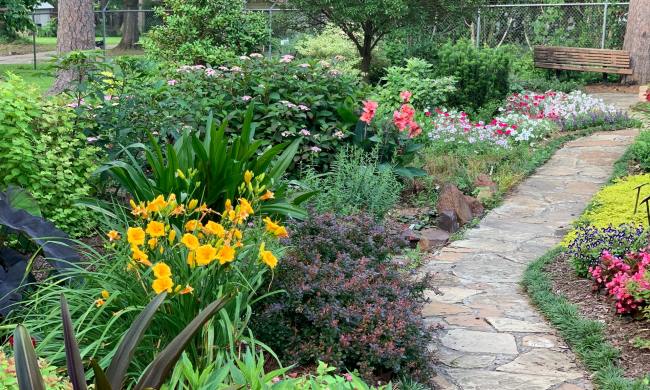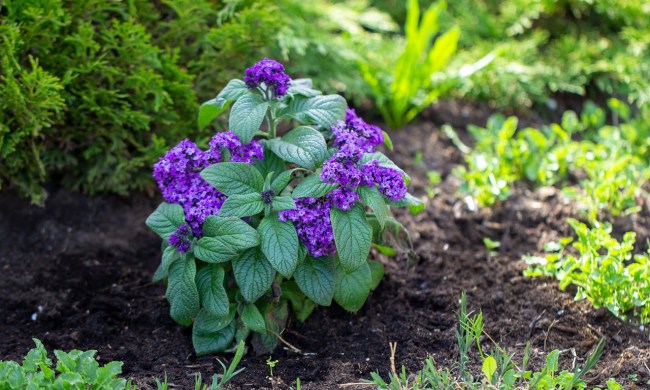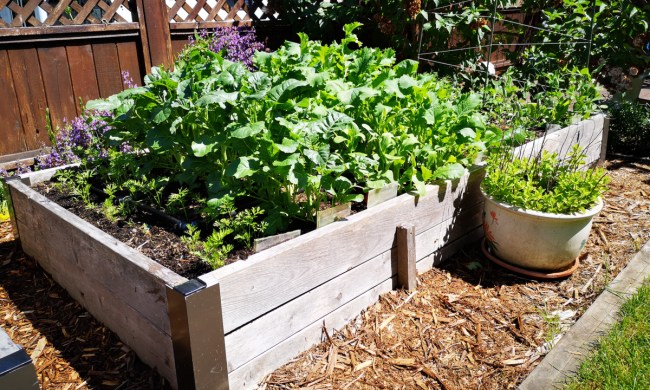Gardeners can design their outdoor spaces in a plethora of ways. From rowdy wildflower gardens to carpets of tiny flowers, there’s a garden design for everyone. If you want your garden to have a dramatic impact on your guests, then plants of varied heights are your friend. Smaller plants at the front leading up to tall flowers in the back make for quite the display. Not just any tall plant will do, though. These are some of our favorite tall flowers for drama and pizazz, and they’re sure to captivate an audience on their own or as part of an ensemble. Not to mention, they’re all fairly easy to grow.
Torch lily

Kniphofia flowers have many common names, including torch lilies and red hot pokers. Both names are accurate descriptions, as these flowers strongly resemble fiery torches or red hot metal. They have tall, straight stems topped with small red, orange, and yellow flowers set in a cone or bottlebrush shape.
These flowers can grow to between 2 and 5 feet tall, and they are perennials, provided they grow in USDA hardiness zones 5 through 9. Despite their fiery appearance, torch lilies can tolerate the cold as long as they’re planted directly in the ground. Potted kniphofia plants should be indoors. While they can tolerate some shade, torch lilies are best planted in full sun.
Blazing star

Blazing star, or liatris, is one of our native tall flowers, with stems reaching as tall as 6 feet! Found throughout the U.S., this gorgeous perennial is easy to spot thanks to its height and bright purple or pink flowers. If you want something to add height to a drought-tolerant garden, blazing star is the best option.
Once established, blazing star flowers are hardy against drought, heat, and cold. Depending on the species of liatris you choose, blazing star plants can grow successfully in USDA hardiness zones 3 through 10, which accounts for most of the U.S. The only thing they can’t tolerate is soggy soil, so be sure to plant them in well-draining soil and full sun for the best flowers.
Hollyhock

Hollyhocks are a favorite of many gardeners, in large part because of the wide range of colors they come in. The average height for a hollyhock plant is between 3 and 6 feet tall, but there are some truly giant varieties that can grow even taller! The current world record (according to the Guinness World Records) measures a staggering 24 feet tall, so be sure not to plant your hollyhocks under any overhanging structures or power lines.
These plants are hardy and adapt easily to a variety of conditions, but they do grow more slowly in extreme heat or cold. For the tallest flowers, full sun, well-draining soil, and mild weather is ideal.
Delphinium

If growing a record-breaking hollyhock sounds a little intimidating, you’ll be happy with a nice delphinium. These flowers are equally gorgeous, but they grow to a much more manageable 6 feet tall. The most common delphinium flower colors are blue and purple, but white and pink delphiniums are also available. There are a range of shades as well, from deep, moody flowers to light, pastel ones.
Delphinium are not as heat tolerant as some of the plants on this list, and they fare much better in regions with mild summers. USDA hardiness zones 3 through 7 are ideal for these lovely perennials. They can grow in hotter climates, but will need more water and shade in the afternoon, and they likely won’t grow as tall. In their preferred climate, delphinium does best in full sun, especially with moist, well-draining soil.
Iris

Irises come in a wide range of heights, with the smallest measuring about 6 inches and the tallest reaching 6 feet. Any iris flower can provide drama to a flower garden because of their richly colored and uniquely shaped flowers. If you want tall flowers, look for a giant blue iris, bamboo iris, or Japanese iris. It’s important to note that of those options, only the giant blue iris is native to the U.S., as it’s a type of blue flag iris. Commonly found in marshes, blue flag irises are a great choice if your soil is prone to slow drainage.
These tall flowers are sure to inject some drama into any garden. Whether you’re looking for a way to spice up a bland yard or want to improve on an already gorgeous garden, one of these flowers is sure to be a great fit for your climate and aesthetics. Just make sure to plant them where they have room to grow — nothing cuts a tall flower short quite like an unfortunately placed tree branch or overhang.




